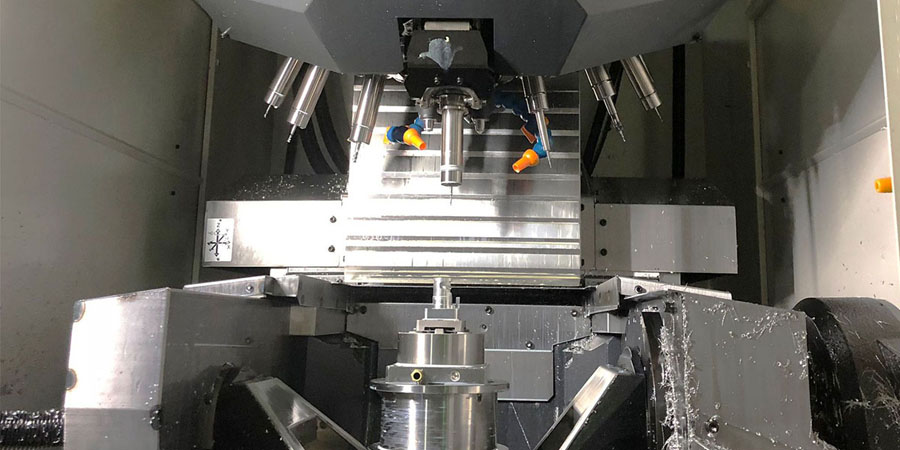In today’s manufacturing landscape, precision CNC machining has become indispensable for creating high-tolerance components used in critical industries like aerospace, automotive, medical, and electronics. These industries demand parts with exceptional accuracy, often within tolerances of a few microns, to ensure optimal performance, reliability, and safety. This post explores what precision CNC machining entails, the techniques used to achieve high-tolerance parts, and its benefits for modern manufacturing.
What is Precision CNC Machining?
Precision CNC (Computer Numerical Control) machining refers to the use of advanced machines, tools, and software to produce parts with extremely tight dimensional tolerances. Unlike conventional machining methods, CNC machining relies on computer-controlled programs to automate the cutting, milling, drilling, or turning processes. This level of automation eliminates human error and ensures consistent results across production runs.
High tolerance is defined as the permissible variation from a specified dimension. In precision machining, tolerances as tight as ±0.001 inches (±25 microns) or even finer are routinely achieved, depending on the material, design complexity, and machining capabilities.
Key Techniques to Achieve High-Tolerance Parts
Advanced CNC Machines
Modern CNC machines are equipped with features like multi-axis capabilities (up to 5 or 6 axes), high-speed spindles, and advanced control systems that enable intricate and precise cuts. Multi-axis machines allow for the simultaneous movement of tools and workpieces, reducing setup times and ensuring superior accuracy for complex geometries.
Thermal Stability and Environmental Control
Temperature fluctuations can cause material expansion or contraction, leading to dimensional inaccuracies. Precision machining environments often employ climate-controlled facilities to maintain stable temperatures. High-end CNC machines are also designed to compensate for thermal effects during machining operations.

Cutting Tool Selection
High-quality cutting tools made from carbide, ceramic, or diamond materials ensure long tool life and reduced wear. Tools must be precisely ground and maintained to ensure consistent cutting performance. Coated tools, such as those with TiAlN or DLC coatings, minimize friction and heat buildup during machining.
Workholding and Fixturing
Secure and rigid workholding systems, such as vacuum chucks, precision vises, or custom fixtures, are essential to prevent movement or vibration during machining. Advanced fixturing also reduces the need for re-clamping, which can introduce alignment errors.
Toolpath Optimization
Software-driven toolpath strategies, such as high-speed machining and adaptive clearing, reduce tool engagement and distribute cutting forces more evenly. This minimizes tool deflection, ensures smoother finishes, and maintains dimensional accuracy.
In-Process Measurement and Inspection
Integrated probing systems allow CNC machines to measure and verify dimensions during machining. Real-time adjustments based on feedback from these probes ensure that parts remain within tolerance throughout the process.
Post-Machining Processes
Processes like grinding, lapping, and honing may be employed after CNC machining to achieve ultra-fine tolerances and surface finishes. These techniques are particularly useful for parts requiring mirror-like finishes or extreme accuracy.
Materials and Applications for Precision CNC Machining
Precision CNC machining is compatible with a wide range of materials, including:
Metals: Aluminum, stainless steel, titanium, brass, and Inconel.
Plastics: PEEK, polycarbonate, acrylic, and Delrin.
Composites: Carbon fiber-reinforced polymers.
Applications span across:
Aerospace: Engine components, structural brackets, and navigation systems.
Medical: Surgical instruments, implants, and diagnostic equipment.
Automotive: Gear systems, fuel injectors, and prototype parts.
Electronics: Housings, connectors, and precision sensors.
Benefits of Precision CNC Machining
Consistency and Repeatability
CNC machining ensures that every part produced in a batch adheres to the same high tolerance, regardless of complexity. This consistency is critical for industries where performance and safety are paramount.
Reduced Waste
The accuracy of CNC machining minimizes material waste, making it a cost-effective and environmentally friendly choice.
Shorter Lead Times
Automation and multi-axis capabilities reduce production time, even for intricate parts. This is especially valuable in prototyping and custom manufacturing.
Improved Surface Finishes
High-tolerance machining ensures smooth finishes, often eliminating the need for additional polishing or finishing processes.
Enhanced Product Performance
Parts with tight tolerances fit together more precisely, leading to improved functionality and reduced wear in assembled products.
Challenges and Solutions
Achieving high-tolerance parts comes with challenges, such as tool wear, thermal distortion, and material inconsistencies. However, these can be addressed by:
Regular machine calibration and maintenance.
Using advanced cutting tools with higher durability.
Employing simulation software to predict and mitigate errors before production begins.
Leveraging skilled operators and engineers to oversee the process.
Conclusion
Precision CNC machining has revolutionized the way high-tolerance parts are manufactured, offering unmatched accuracy and efficiency. As industries continue to demand smaller, lighter, and more complex components, the importance of precision CNC machining will only grow. By leveraging advanced technologies, robust processes, and expert knowledge, manufacturers can deliver exceptional results that meet even the most stringent requirements.
Whether it’s aerospace, medical devices, or automotive components, precision CNC machining remains a cornerstone of modern manufacturing, driving innovation and enabling the creation of products that shape our world.



